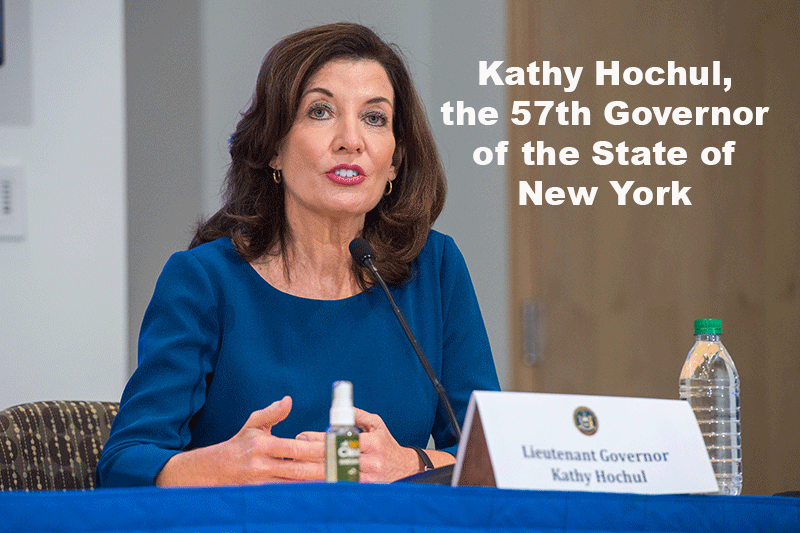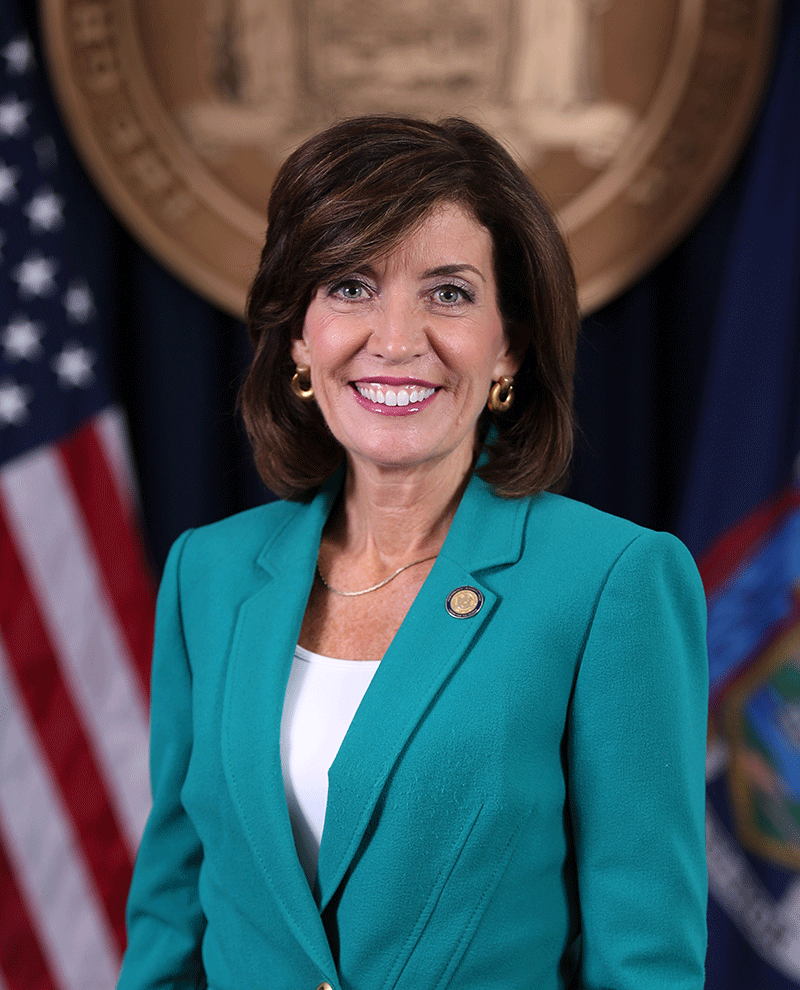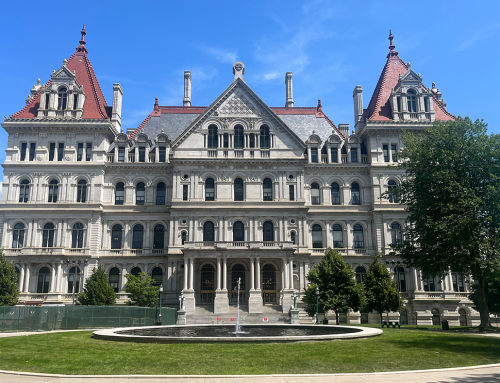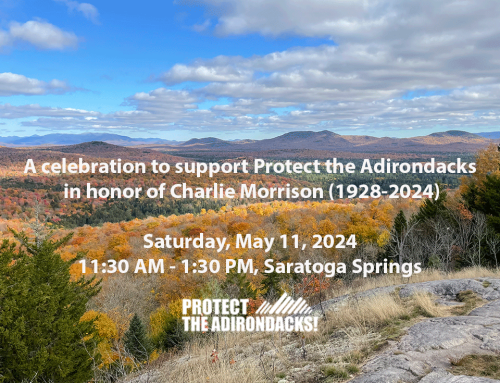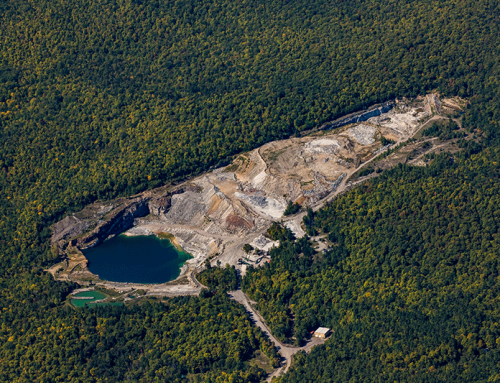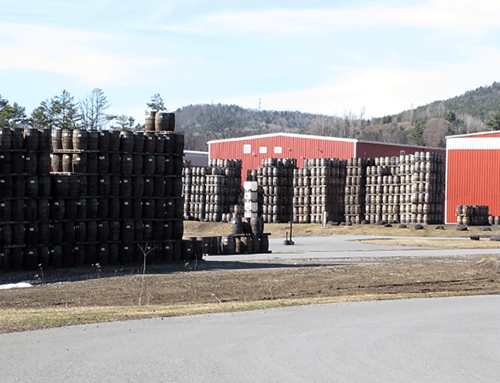Protect the Adirondacks congratulates Kathy Hochul, of the Town of Hamburg in Erie County, on becoming the 57th Governor of the State of New York. She is the first female Governor in New York’s history. She has been a frequent visitor to the Adirondack Park and North Country and has addressed many forums and events over her years as Lieutenant Governor.
Protect the Adirondacks has worked since 1901 to protect the public Forest Preserve, wild places, waters, and rural communities of the Adirondack Park. Because New York is a state with a strong executive and because the Department of Environmental Conservation (DEC) and Adirondack Park Agency (APA) play major roles, administering the 2.6-million-acre public Forest Preserve and the regional land use zoning plan, the priorities of the Governor shape Adirondack Park policy in a direct and substantial way.
We urge Governor Hochul to take a fresh look at the state’s priorities in the Adirondack Park. We look forward to working with the new Governor and her new team to forge a new path for the Adirondack Park. Here are 10 priorities that demand attention and action and will help to set a new tone and improve the overall management of the Adirondack Park and protection of the Forest Preserve.
Institute Transparency and Openness in Adirondack Park Policymaking: The past 10 years have seen numerous instances where major decisions were made in secret agreements brokered by state agencies. Conducting government by secret agreement undermined required public processes where independent scientific analysis was supposed to guide decision making. The closed process utilized by DEC/APA over the last 10 years has also undermined the integrity of public hearings as state agencies limited the scope of a decision to fit the terms of an already negotiated agreement. We urge Governor Hochul to end the practice of making decisions in closed or secret meetings and to return decision-making in the Adirondack Park to open and transparent public forums.
Follow the Law: On May 4, 2021, the Court of Appeals ruled that the DEC and APA had violated Article 14, Section 1, the forever wild clause, of the State Constitution. In Protect the Adirondacks v DEC and APA, the Court ruled that a planned network of extra-wide snowmobile trails, the first 27 miles of which had been constructed, violated the State Constitution and could move ahead only if approved in a Constitutional Amendment. These trails were called “Class II Community Connector Snowmobile Trails” and were fundamentally different from other trails previously built on the Forest Preserve.
The Court of Appeals decision capped an 8-year legal fight that involved a trial at the State Supreme Court and an appeal at the Appellate Division, Third Department. This decision was the third major court decision on forever wild in New York’s history and should be used to help establish and shape the state’s management of the Forest Preserve. Unfortunately, the DEC has embarked upon a course in response to the Court of Appeals decision where it is attempting to practice business as usual and largely ignore the recent of court decisions. We have urged the DEC to comply fully with the recent court decisions. Other groups have called upon the DEC to do the same. We urge the Hochul Administration to respect and fully implement the court’s decision.
Save Whitney Park: The 36,000-acre Whitney Park in the Town of Long Lake, in Hamilton County, is squarely in the center of the Adirondack Park. This tract is current privately owned, part of the estate of recently deceased Mary Lou Whitney. The tract has 22 lakes and ponds, is bordered by Wilderness lands to the north and Wild Forest lands to the east and south. The tract has over 100 miles of undeveloped shoreline. Whitney Park has been at the top of New York’s land conservation priority list for decades.
The current owner has said he plans to subdivide this tract into 10 lots, which will require a permit from the Adirondack Park Agency. This is a highly controversial project. We urge you to commit to public protection of Whitney Park by purchasing these lands for the Forest Preserve. The protection of Whitney Park would be a great achievement.
Invest in the Forest Preserve: The 2.6-million-acre public Forest Preserve underwrites the economy and way of life in the Adirondack Park. The Forest Preserve is a tremendous resource that brings joy each year to millions of New Yorkers. While we have seen unprecedented investment in state resources, such as over $500 million spent out of the general fund and Environmental Protection Fund (EPF) to rebuild the Olympic Regional Development Authority (ORDA) facilities in the Adirondack and Catskill Parks, spending on the trails and facilities of the Forest Preserve has been scant. It’s mystifying to us why the public Forest Preserve received such limited investment over the last 10 years even as public use has skyrocketed. It does not make sense nor is it sustainable for the Forest Preserve to continue to receive the limited investments it has been receiving going forward.
The High Peaks Wilderness and the rest of the Forest Preserve have seen a huge increase in public use in recent years, with no end in sight. The most heavily used hiking trails on the Forest Preserve are in terrible shape. Hundreds of miles of hiking trails need to be rebuilt from top to bottom, end to end. New trail building techniques have been honed in the Adirondacks and across the U.S. Trails can be designed and constructed in ways that require minor long-term maintenance. One showcase new hiking trail in the High Peaks Wilderness Area, from the Mount Van Hoevenberg Olympic Winter Sports Complex to the summit of Mount Van Hoevenberg, was built with Wilderness trail building techniques. This trail building has been slow, but it’s extremely effective and the new trail is a welcome addition.
Here’s one example of how State funding in the Adirondack Park is misdirected. Recently, the state spent $5.1 million to build a new “Mountain-Coaster” at the Mount Van Hoevenberg Winter Sports Complex managed by ORDA. So far in 2021, around 9,000 people have paid to ride the mountain-coaster. A few miles away, twice that number have already hiked a badly eroded and rapidly deteriorating trail up Cascade Mountain. While ORDA got $5.1 million to build a new mountain-coaster, the Forest Preserve is chronically underfunded. This must end.
The State of New York has one seasonal trail-building crew in the Adirondack Park, while private contractors and non-profits also manage trail crews. But the overall effort, given the miles and miles of trails that need to be rebuilt, is paltry. The Adirondack Park needs a renaissance of trail building, with ample funding for dozens of trail crews that employ hundreds of people seasonally. In the High Peaks Wilderness right now, it will take 150 years to rebuild the trail system at the current rate of trail work. This is unacceptable and needs to change. The answer is greater investment in the Forest Preserve.
The Forest Rangers in the Adirondack Park have seen their workload grow in recent years as greater numbers of people are using the Forest Preserve. Today, a Ranger’s time devoted to search and rescues is far greater than in previous decades. That means that public education and facilities maintenance are not receiving adequate attention. The answer is more Forest Rangers. The new Ranger Academy class for 2022 in the Adirondacks is scheduled for 40 positions, but most of these will be used to refill recent and pending retirements. The Forest Ranger corps in the Adirondack and Catskill Parks needs to be doubled. We urge you to hold new Ranger Academies in 2023 and 2024, with an emphasis on building a more diverse Ranger corps as well as increasing the number of Rangers at work in the field.
Fix the Adirondack Park Agency: The APA is at the lowest point in its history, with a weak Board and senior staff. The APA Board makes decisions on major projects and is heavily tilted towards local government officials and business interests. The APA Board has 11 members, three from state agencies and eight appointed citizen members. APA is supposed to balance conservation and development, yet the current Board blindly supports nearly any and all development. Three of the five in-Park Board members are current or former local government officials. There is no scientist on the APA Board. There is no forester. There is no member with regional planning experience.
The APA has failed to uphold its mission with respect to the public Forest Preserve. The APA has a statutory checks-and-balances responsibility over the DEC in management of the Forest Preserve. Yet the APA has recently functioned as a bureau within the DEC and not as an independent agency. One outside-the-Park Board member is a former career official from the DEC. The lack of independence has led to, among other problems, the recent Court of Appeals decision where the DEC and APA were found to have violated Article 14, Section 1, of the State Constitution.
In recent years, the APA has seen numerous resignations of outstanding Board members, including a respected scientist and an environmental attorney, both of whom noted interference by the DEC and the Executive Chamber in the operations and decision-making at the APA. The APA has been without a Chair for two years. The APA Act requires that the APA be the lead agency for planning in the Adirondack Park, but the APA has been rudderless and ineffectual, abdicating its leadership position. We urge Governor Hochul to replace the majority of Board members and senior staff at the APA.
Fix the Department of Environmental Conservation: In the Adirondack Park, the DEC has failed to meet key challenges in its management of the public Forest Preserve. As mentioned above, the current DEC leadership violated the forever wild clause of the State Constitution and has failed to comply with the court’s decision. Also mentioned above, the hiking trails in the Forest Preserve are in poor shape. The root of these problems is mismanagement at the DEC.
Many hiking trails in the Forest Preserve were originally built just after the Civil War and are not modern, sustainable foot trails. The DEC constructed the Frontier Town Campground at a cost of $25 million and, as a result, DEC now spends more money each year on staffing that facility than it spends on all the trails in the Forest Preserve. The DEC has managed to put just one small state trail crew in the field. The Forest Preserve merits, and requires, a much bigger effort.
While we commend the DEC on organizing the High Peaks Strategic Planning Group, which developed a report with hundreds of recommendations, this was done in a closed, secret process. Consequently, the report has suffered since its release from a lack of public buy-in and exposure. Only a handful of recommendations have been taken up by the department, and it has not published or communicated any kind of road map for how it plans to move forward in the High Peaks.
We have long advocated for a new Forest Preserve management program that is built on four pillars: 1) Public education–at the trailhead, in the field, and online–to teach and inform hikers about how to use the Forest Preserve. 2) Science, for independent assessments on the impacts of public recreation on the natural resources and user experience on the Forest Preserve. 3) Sustainable trails as hundreds of miles of foot trails in the Forest Preserve require upgrades, many should be closed and new routes designed. 4) Improved facilities, for trailheads, parking lots, shuttle systems, and enhanced staffing. The DEC needs to fundamentally reform its management of the Forest Preserve.
The Adirondack Park State Land Master Plan was approved 50 years ago. It required that a Unit Management Plan (UMP) should be created for all units in the Forest Preserve. Yet, after half a century, there are still major Wilderness and Wild Forest units with no UMP. These areas total hundreds of thousands of acres. It’s mystifying to us how the DEC could fail to complete all Forest Preserve UMPs after 50 years.
Protect Adirondack Waters: In many ways the lakes and ponds of the Adirondack Park define the Adirondack experience and sustain the quality of local life. High shoreline values in the Adirondacks, which are some of the highest in New York State, help to underwrite local government services and the local economy. What has historically defined the Adirondack Park has been easy access to clean water. The state needs to redouble its efforts to protect water quality.
New York needs to curb road salt pollution. Many major lakes in the Adirondacks suffer from road salt pollution because of winter road maintenance. While legislation was passed in 2020 for the road salt task force for the Adirondacks, it has not been activated yet. Traditionally, the Department of Transportation has resisted reform. Major aquifers in the Park are threatened with permanent damage, and many private residential wells have been contaminated.
The Adirondack Park needs a Lake George-style mandatory boat inspection and decontamination program. Aquatic invasive species (AIS) continue to spread in the Adirondacks and infest new waterbodies. Treatment to try and control AIS in a lake or pond is expensive; while AIS populations can be controlled, they are hardly ever eradicated. A priority needs to be placed on stopping the spread and prevention. Because of the Lake George Park Law and the Lake George Park Commission, a mandatory boat control law was put in place for Lake George four years ago. This law has been very successful. The Adirondack Park needs a Lake George-style mandatory boat control law.
New York needs reform of septic system regulation. New York has seen a rise in harmful algal blooms (HABs) in the past three years. HABs are driven by the loading of nutrients and other pollutants that overwhelm an aquatic system. One key contributor is septic systems. New York has outdated septic system control laws that are some of the weakest in the U.S. At a minimum, it’s time to pass statewide laws that require inspections at the time of property transfer.
New Investments in Rural Economic Development: The 2020 US Census showed that 53% of counties in the U.S. experienced population losses from 2010 to 2020. This high number of counties losing population is unprecedented in American history. In New York State, population growth was robust in the 10 counties of New York City, the lower Hudson Valley, and Long Island. Upstate, population trends were largely flat, with some cities and surrounding counties gaining, but 39 of the 52 counties across Upstate lost population.
There is nothing unique about Adirondack Park or rural Upstate New York population trends. They are consistent with and driven by population trends that have been decades in the making across Rural America. In its efforts to recruit young people, the Adirondacks is in competition with every other rural area in every other state.
What are the ingredients for successful population recruitment in the Adirondack Park and how can the State of New York help? Right now in the Adirondacks and the North Country there are more jobs that there are people to fill them. This is an issue across Rural America. Obstacles to finding people to fill these jobs, and getting people to relocate include a lack of affordable housing, a dearth of widespread and accessible social and cultural amenities, and minimal community support for diversity and inclusion. The Adirondack Park needs to emphasize its traditional commitment to high-quality schools and improve access to health care and broadband.
The recent infrastructure package signed by President Biden will provide the greatest infusion in decades of funding for municipal infrastructure, such as water and sewer systems/plants and Main Street revitalization, as well as broadband. This funding creates an unprecedented opportunity to expand broadband to all corners of the Adirondack Park.
Invest in Affordable Housing: The lack of affordable housing is the biggest obstacle facing Adirondack communities. Many residents simply cannot compete for housing with the second home market. Compounding the lack of affordable housing for residents to buy is the lack of affordable rentals as the rental market has been skewed towards the short-term rental market of online rental apps. This is a complicated problem, which is not just an Adirondack problem, that has created serious challenges for many communities across New York State. We urge you to make affordable housing a key part of your agenda.
Finalize New York’s Climate Change Plan: In 2019 New York adopted the Climate Leadership and Community Protection Act (CLCPA), which was landmark legislation. The major CLCPA goals are:
- Full decarbonization of the electrical grid by 2040.
- Net zero emissions across the state economy by 2050.
- Investment of between 35 and 40 percent of state climate funding in disadvantaged communities that bear the brunt of both climate impacts and fossil fuel-driven air pollution.
To date, the state has not backed up the CLCPA with dedicated funding and it has yet to complete a statewide plan. We urge Governor Hochul to commit to completing and fully enacting this plan.
Protect the Adirondacks urges Governor Hochul and her staff to reach out to and listen to a wide and diverse array of voices in the Adirondacks and North Country and throughout the state. We look forward to working with Governor Hochul and her team to protect the Adirondack Park and to protect the forever wild Forest Preserve.

